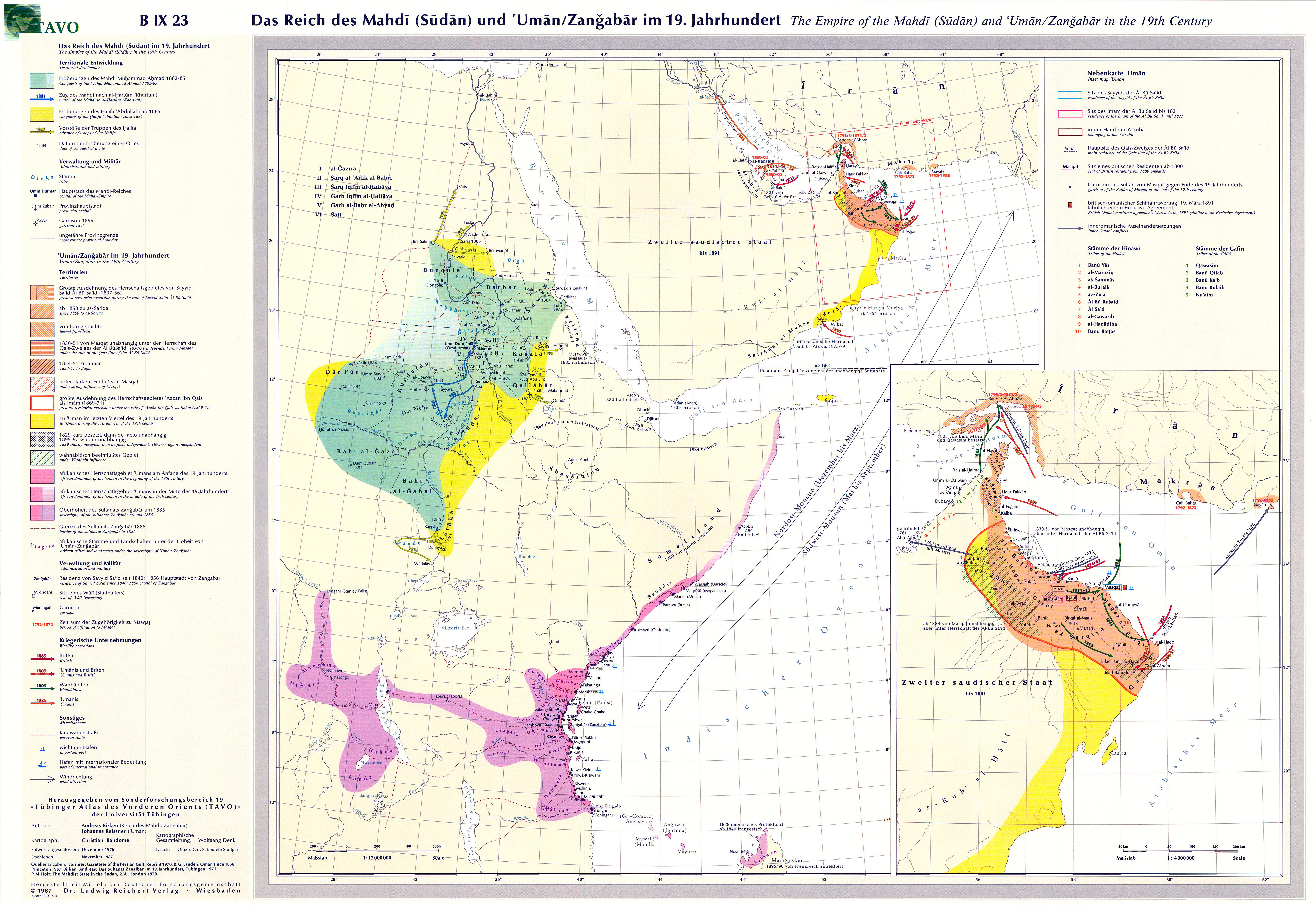Omani Empire and Mahdist Sudan Resistance Map


Alex Cartwright
Senior Cartographer & GIS Specialist
Alex Cartwright is a renowned cartographer and geographic information systems specialist with over 15 years of experience in spatial analysis and data...
Geographic Analysis
What This Map Shows
The map titled "Omani Empire and Forgotten Mahdist Sudan. Resistance to European Colonialism" vividly illustrates the geographical expanse of the Omani Empire at its height, alongside the territories influenced by the Mahdist movement in Sudan during the late 19th century. It highlights the significant regions where these two powers resisted European colonial ambitions, showcasing the complex interplay of culture, religion, and politics in a rapidly changing world.
As we delve deeper into the map's subject matter, it becomes clear that the Omani Empire and the Mahdist Sudan were pivotal players in the broader narrative of resistance against colonialism in Africa.
Deep Dive into the Omani Empire and Mahdist Movement
The Omani Empire, which reached its zenith in the 18th and 19th centuries, was a maritime powerhouse that extended its influence across the Arabian Peninsula, the East African coast, and parts of the Indian Ocean. Notably, the empire was instrumental in the trade of spices, ivory, and slaves. The capital, Muscat, became a thriving port city, serving as a crucial hub for commerce and cultural exchange. Interestingly, Oman’s strategic location allowed it to control important trade routes, which made it a formidable entity facing European powers like Britain and Portugal.
In contrast, the Mahdist movement in Sudan, led by Muhammad Ahmad, who declared himself the Mahdi (the guided one), was a religious and political uprising against Turco-Egyptian rule backed by British interests. The Mahdist forces sought to create a puritan Islamic state and successfully established the Mahdist Sudan in the 1880s, challenging both local and foreign powers. This resistance culminated in significant battles, including the famous Siege of Khartoum in 1885, where the Mahdist forces defeated the British-led garrison.
What's fascinating is the overlap of these two historical narratives. While the Omanis were expanding their empire, the Mahdists were rallying people under the banner of religious revivalism and anti-colonialism. Both movements not only resisted European encroachment but also sought to redefine their identities in the face of external threats.
Statistically, the Omani Empire controlled vast territories, but it is the Mahdist movement that arguably had a more profound impact on the cultural and political landscape of Sudan. The Mahdist state lasted until 1898, when it was ultimately defeated by the Anglo-Egyptian forces, but its legacy remained, influencing Sudan's future struggles for independence.
Regional Analysis
Examining the regions depicted on the map reveals significant differences in how colonial powers were resisted. The Omani Empire primarily engaged in maritime resistance, utilizing its naval capabilities to fend off European incursion, particularly in coastal areas of East Africa. Cities like Zanzibar became key centers of resistance, where Omani influence was felt strongly.
On the other hand, the Mahdist Sudan demonstrated a more land-based resistance strategy. The deserts and the Nile River system played crucial roles in the Mahdist military campaigns, allowing them to maneuver effectively against better-armed British forces. The map also indicates regions where local tribes allied with or against the Mahdists, showcasing the intricate web of loyalties and rivalries in Sudan during this tumultuous period.
Interestingly, while the Omanis managed to retain a degree of autonomy and even negotiated with colonial powers, the Mahdist resistance was marked by a more radical and uncompromising stance, reflecting the deep-seated grievances against foreign domination. This divergence highlights how geography influenced the methods of resistance and the outcomes for both the Omani Empire and the Mahdist movement.
Significance and Impact
Understanding the dynamics of the Omani Empire and the Mahdist movement is essential for grasping the complexities of resistance to European colonialism in Africa. This topic not only sheds light on the historical context of colonial resistance but also has implications for contemporary discussions about national identity, post-colonialism, and the legacies of empire.
Today, as nations across Africa continue to grapple with the effects of colonialism, the stories of the Omani Empire and the Mahdist resistance serve as reminders of the diverse strategies employed by indigenous peoples to assert their sovereignty. The ongoing dialogues around heritage, cultural preservation, and the reclamation of history are deeply rooted in these historical narratives.
In conclusion, the map not only serves as a visual representation of geographical boundaries but also encapsulates the rich and complex histories of resistance that shaped modern-day political landscapes. As we reflect on these past struggles, we can better understand the ongoing impacts of colonialism and the resilience of cultures that continue to thrive today.
Visualization Details
- Published
- August 12, 2025
- Views
- 160
Comments
Loading comments...